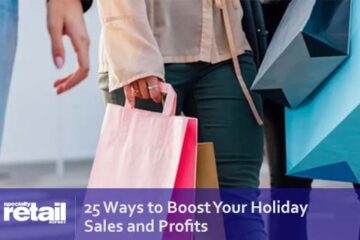Mobiles are the devices where the high street fights back. – Mandeep Singh, CEO and co-founder of StreetHub
As a smart retailer you know that your customers are increasingly turning to their trusty smartphones to assist them in every step of the shopping process. According to a report by Internet Retailer, “nearly two-thirds of smartphone owners in Q2 2013 used a mobile web browser to research product features (64%), and more than half used a mobile web browser to find a store location (59%) and to find coupons and deals (53%).” It’s also why creating a strong mobile presence is more important now than ever before.
Here are a few steps to enable you to do just that:
Get listed on search engines and social networks
Search Engines
The first step to increasing your mobile visibility is to put your business on the map. Google’s map, that is. Doing so will allow customers to find you whenever they type in your business name or a relevant keyword (i.e. coffee shop, winery, etc.) into Google.
Head to Google’s Places for Business page then type in the necessary information about your business. Go beyond the basics (i.e. name, address, phone) and provide as many details as you can, including your hours of operation, methods of payment that you accept, available parking, etc. Also add some photos of your location and products. The more details you can provide, the more credible you’ll appear.
The next step is verifying your ownership. Google will send you a postcard containing a PIN number that you can enter on the verification page. Once this is done, you’re good to go.
Bing offers a similar service at BingPlaces.com. Its process is similar to that of Google’s, but you will need to create a Microsoft account in order to get listed.
Yelp
Yelp can deliver tremendous visibility for your business both on the web and on mobile (its app was used on over 11 million unique mobile devices in the third quarter of 2013). In addition, having your business listed on the site enables you to track and respond to reviews, create deals, and get to know your customers more.
You can also incentivize Yelp users to check-in and make purchases.
Case in point: DK’s Donuts & Bakery in Santa Monica. The bakery offers freebie deals to customers who make a purchase and check-in via Yelp. Doing so encourages sales while putting the business in front of their customers’ friends at the same time.
To start Yelping, go to the Yelp for Business Owners Page and claim your business. You can do this by searching for your company on Yelp’s Find Your Business page, and hitting the “Claim” button beside your business name.
If your company isn’t listed on the site yet, you’ll need to create an account and fill out the necessary forms for your business.
Foursquare
Having a Foursquare listing enables customers to check-in to your location and broadcast their activities to their friends. It also lets them leave comments and tips for other users.
Get started by creating a Foursquare account. Like Yelp, you can use the site’s business search tool to see if your company is already in its database. If your business isn’t listed, you can create a listing on foursquare.com/add_venue.
Once you have found or created your listing, click the “claim here” button then follow the steps to verify ownership. For a one-time $1 fee, Foursquare lets you verify your listing via phone, so you can start managing your account immediately. Alternatively, you can opt for postal mail verification, which is free, but it can take up to a month before you receive your claim code.
Partner up with shopping apps
Customers are also using their mobile devices to look up product information and deals. If you’re offering promotions or just want to put your product information out there, consider partnering with shopping apps to have your store show up on shoppers’ mobile devices.
For instance, Red Laser, one of the top mobile apps for scanning product barcodes and comparing prices, lets merchants submit their data feeds so they can get their product information and pricing available through the app.
Meanwhile, Yowza!!, a mobile couponing app which searches for deals based on the user’s location, also has some merchant services that allow businesses to upload coupons so that shoppers in the area can find their deals. Yowza!! offers a free account that lets companies publish one coupon per store a month. It also has a $49 ($19 for a limited time) standard plan for three coupons a month, and a $99 ($39 for a limited time) plan for unlimited coupons.
Optimize your site for mobile
So you’ve set up your listings and mobile coupons. What happens when mobile users actually click-through your site to learn more about your business? If shoppers are greeted with a messy website that’s difficult to navigate on their phone, you instantly reduce the chances of getting them through your door.
Prevent this by designing a user-friendly and responsive mobile website. Make the text and images large enough so that they’re fat finger-proof and make sure that your contact information is easy to find. Also remember that you don’t have to cram all the information and pages from your full site into the mobile version. Only include the most important and frequently visited pages and just add an option to view your entire website so users can access it if they need to.
To make things easier, look into services such as Mobify or Mofuse to create a mobile version of your existing website.
Using mobile to target local customers
Research has shown that “79 percent of smartphone owners and 81 percent of tablet owners use their devices to search for information on local businesses”.
These numbers tell us that the best way to get the most out of mobile is to focus your efforts on local consumers. Whenever you launch a mobile campaign or initiative, make sure that it’s only targeting consumers who are within a certain radius of your store. Doing so is more effective both from a cost, as well as from a conversion standpoint.
Fortunately, the above strategies are already local-centric by default. Google, for example, automatically uses the person’s location when they run a search without specifying a zip code or city, and the Yowzaa!! app displays deals depending on how close the user is to a store.
There are however, other things you can do reach more local customers:
Improve your store locator page
For starters, you can optimize your mobile store locator. Chances are, those who land on your store locator page are local consumers who need to look up your address or want to get in touch. Make it really simple to complete these actions by ensuring that your store locator is as user-friendly as possible.
Have a store locator button on every page of your mobile site to make it easy for visitors to find you, and see to it that the page has click-to-call and click-to-map buttons.
A report by PayPal Media found that 57% of mobile landing page clicks are from lower-funnel actions like click-to-map and click-to-call, indicating that these two functions are what mobile shoppers are utilizing the most.
Adding these buttons to your store locator will enable people to get information and directions straight from their mobile device.
Launch a conquesting campaign
You can also use a strategy called competitive conquesting, which is the practice of serving up ads targeting customers who are within the vicinity of your competitors.
An example of this in action can be seen in a Best Western hotel branch in Washington. Aside from targeting mobile users near its location and at the airport, the hotel chain implemented a geo-fence campaign that targeted users who are located near the branches of its competitors. Its goal was to increase traffic to its one-click access reservation page. According to the report above, this resulted in an increase in traffic to its reservation page, allowing Best Western to get in front of its target customers.
Going mobile isn’t just an option for retailers anymore. It’s a priority. The steps outlined above are easy and inexpensive (some are even free), so take the time to complete them.
Action steps:
- If you haven’t done so yet, list your business on Google, Bing, Yelp, Foursquare, and other relevant sites/directories. Doing so will make it easier for your online customers to find you.
- Running deals and promotions? Get those offers in front of mobile users by using shopping apps such as Red Laser or Yowza!!
- Optimize your mobile site. Make sure it’s easy to navigate and is fat finger-proof. Use services such as Mobify or Mofuse to get a great mobile site up and running.
- While you’re at it, optimize your store locator page as well. Add a locator button on every part of the site and include click-to-call and click-to-map features.
- Got a mobile advertising budget? Don’t just target people who are within the radius of your store; look up your closest competitors and serve up ads to people in those areas.
Francesca Nicasio is a retail expert from Vend, a point-of-sale, inventory, and customer loyalty software that helps over 12,000 retailers manage and grow their businesses. She’s the author of the bestseller “Retail Survival of the Fittest:7 Ways to Future-Proof Your Retail Store,” a practical guide to modern-day retail success. For a limited time, download it for free here.





